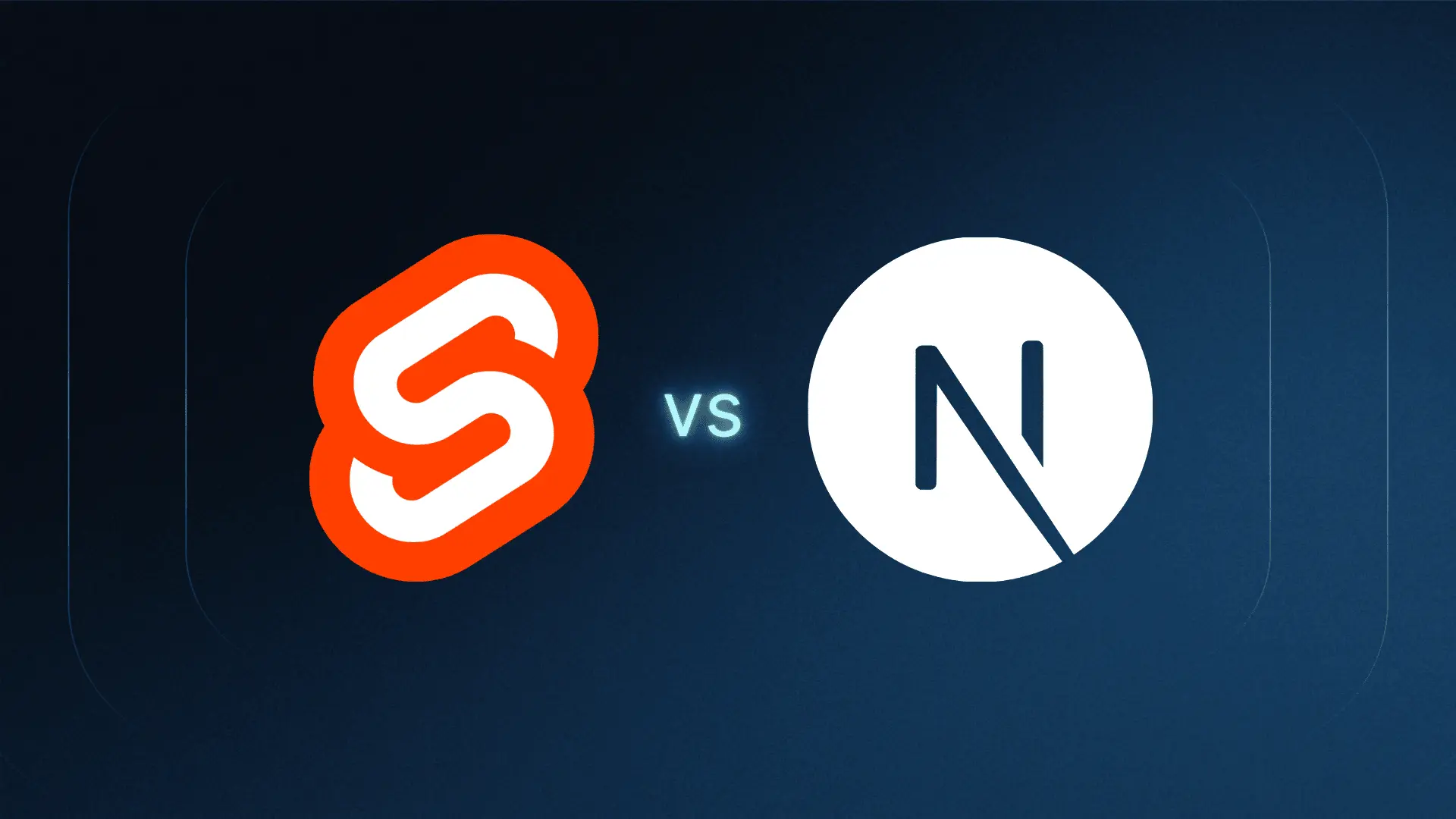In the modern era of full-stack JavaScript development, frameworks are evolving faster than ever. Two standout choices for developers in 2025 are When comparing SvelteKit vs Next.js, it’s clear that both frameworks offer powerful features for building modern, full-stack web applications. As developers increasingly focus on performance and scalability, choosing the right framework becomes a crucial decision for 2025. In this post, we’ll dive deep into the differences, strengths, and ideal use cases for both SvelteKit and Next.js.
SvelteKit vs Next.js: Performance Showdown
One of the most significant differences between SvelteKit and Next.js is performance. SvelteKit stands out by compiling your code at build time, resulting in smaller JavaScript bundles and faster page loads. This gives SvelteKit a significant edge in terms of raw performance, especially for smaller apps and websites that prioritize speed.
In contrast, Next.js is built on top of React, which uses a virtual DOM for rendering. While Next.js provides excellent performance out-of-the-box, it generally requires more runtime JavaScript, which can increase load times, especially for larger applications.
Verdict: SvelteKit tends to outperform Next.js for lightweight applications, but Next.js can still deliver excellent performance for more complex applications.
SvelteKit vs Next.js: Developer Experience
When it comes to developer experience, SvelteKit vs Next.js offers two very different approaches. SvelteKit is designed for simplicity and minimalism. Its syntax closely resembles standard HTML, CSS, and JavaScript, making it incredibly easy to learn, even for developers who are new to frameworks.
On the other hand, Next.js, built on React, requires you to learn JSX, React components, hooks, and state management. While React is highly powerful and flexible, it also introduces more complexity for newcomers.
Verdict: SvelteKit is better for developers who prefer a lightweight, clean syntax with less boilerplate, while Next.js is ideal for those already familiar with React’s ecosystem.
SvelteKit vs Next.js: Ecosystem and Community Support
A critical factor in deciding between SvelteKit vs Next.js is the ecosystem and community. Next.js benefits from being built on React, which has a massive community and ecosystem. With tons of libraries, tools, and resources, Next.js is a safe choice for developers looking for a broad range of options and integrations.
SvelteKit, while rapidly growing in popularity, doesn’t yet have the same extensive ecosystem as Next.js. However, SvelteKit’s community is passionate and dedicated, and the framework is designed to be incredibly lightweight, meaning you may not need as many third-party libraries.
Verdict: If you need a robust ecosystem with a vast selection of plugins and third-party tools, Next.js is the clear winner. However, if you prefer a minimalist approach with more flexibility, SvelteKit might be the better choice.
SvelteKit vs Next.js: Use Cases
When to Choose SvelteKit
- You want a highly performant, lightweight application.
- You’re building a small to medium-sized app that requires minimal overhead.
- You prefer simpler code with less boilerplate.
- You’re working on projects where speed and performance are the main focus.
When to Choose Next.js
- You’re building large, complex applications that need to scale.
- You require React-based integrations, or your team is already familiar with React.
- You need a robust ecosystem with mature tooling and a large community.
- You’re working on projects that involve extensive third-party integrations.
Conclusion: SvelteKit vs Next.js – Which One Should You Choose?
Both SvelteKit vs Next.js offer excellent solutions for building full-stack applications, but your choice depends on your project’s needs. If performance and simplicity are your primary concerns, SvelteKit might be the better option. However, if you need a larger ecosystem, more community support, and advanced features like Incremental Static Regeneration (ISR), Next.js is the right fit.
For smaller apps or MVPs where speed and efficiency are key, SvelteKit is hard to beat. But for enterprise-scale applications with complex requirements, Next.js is a safer, more mature choice.
Ultimately, the decision between SvelteKit vs Next.js comes down to your specific use case, team expertise, and the long-term goals of your project.




